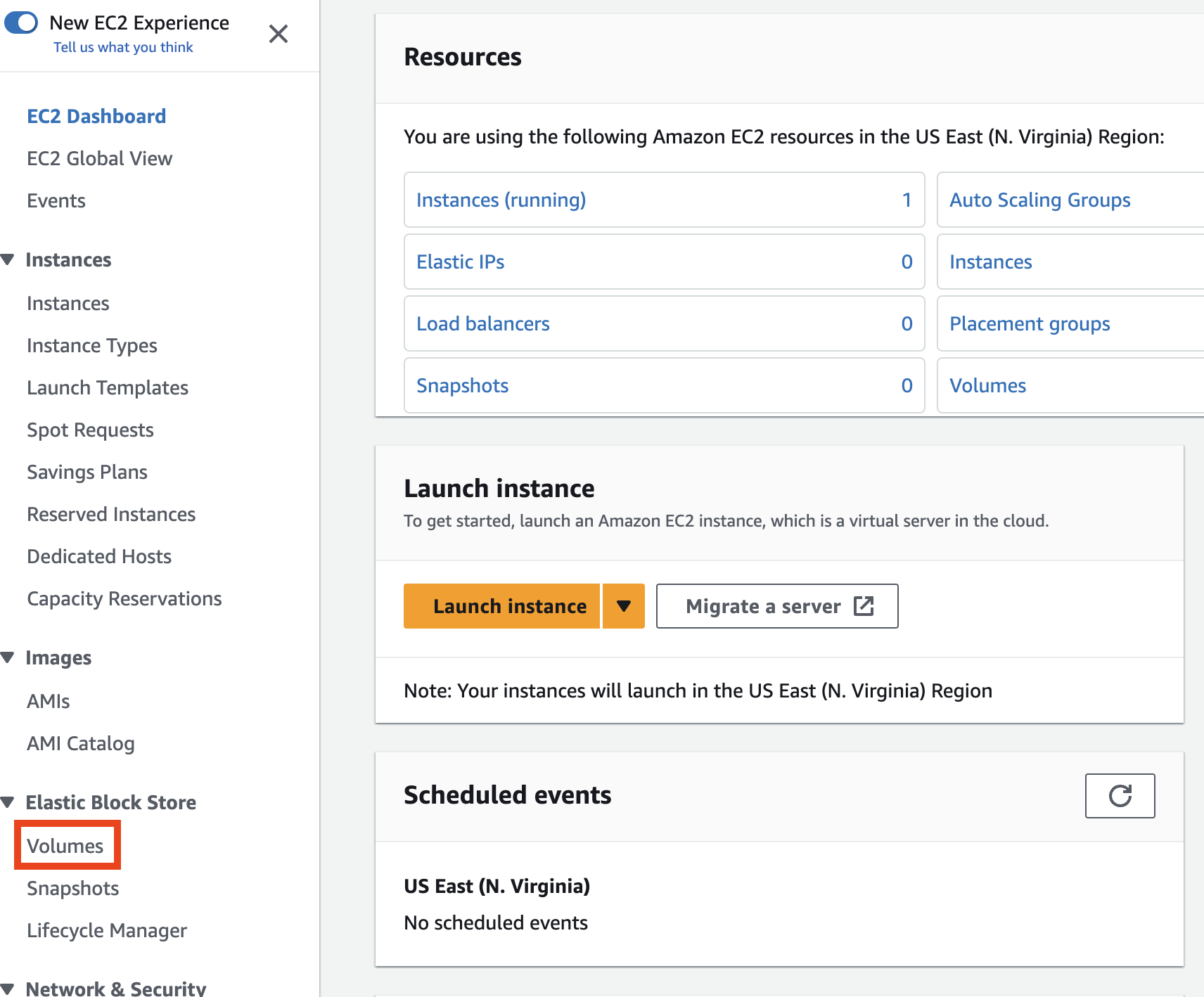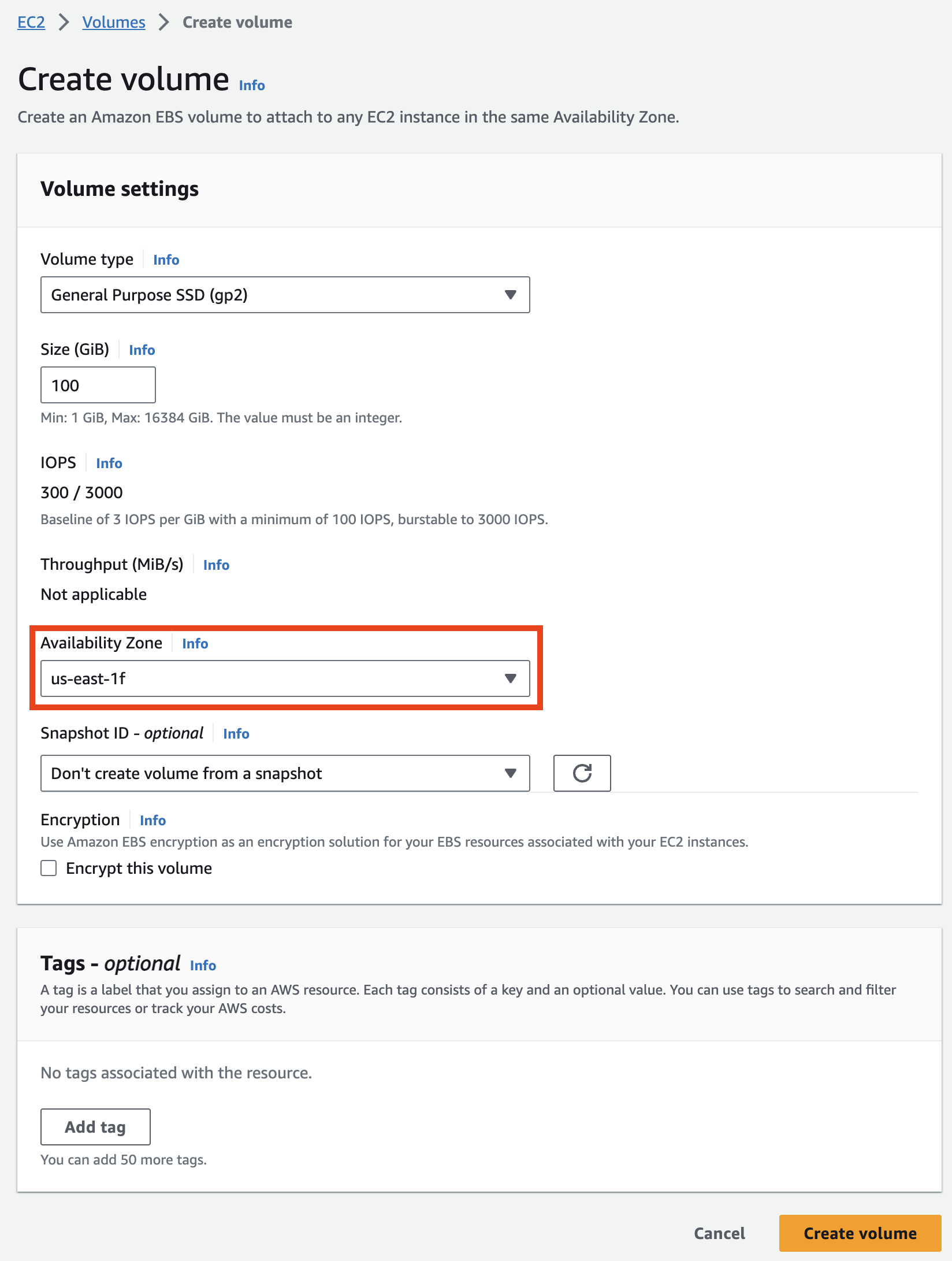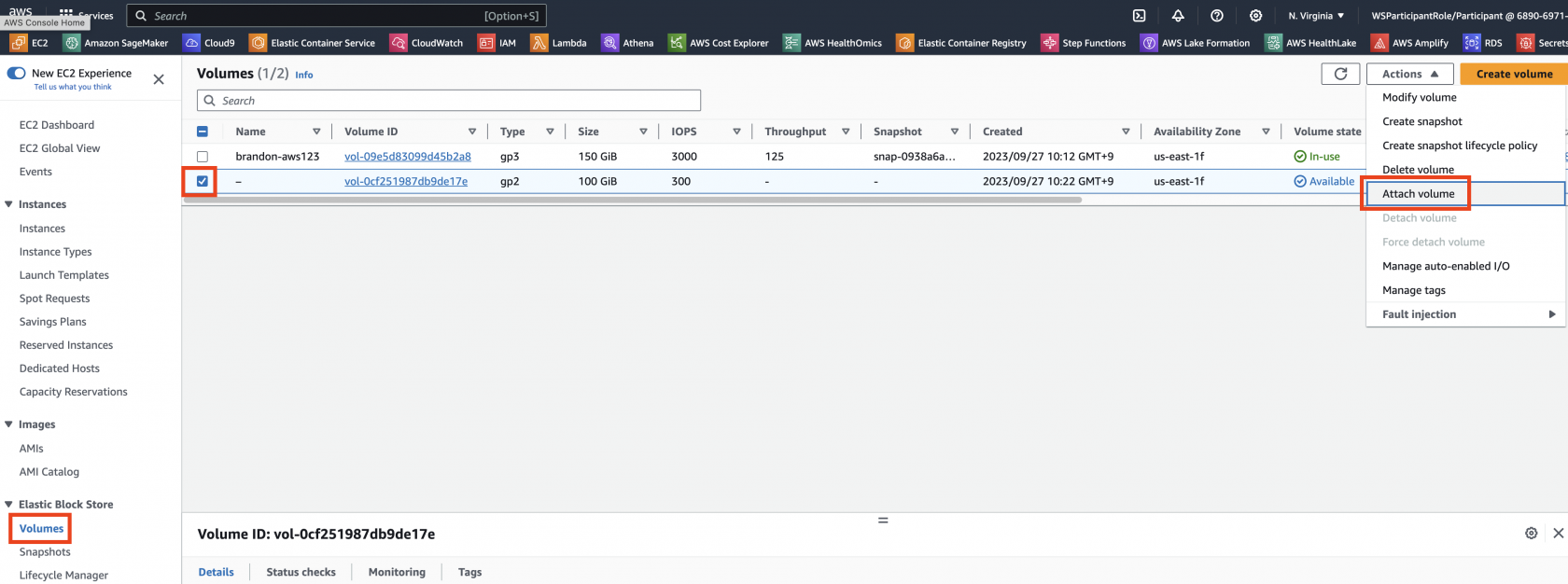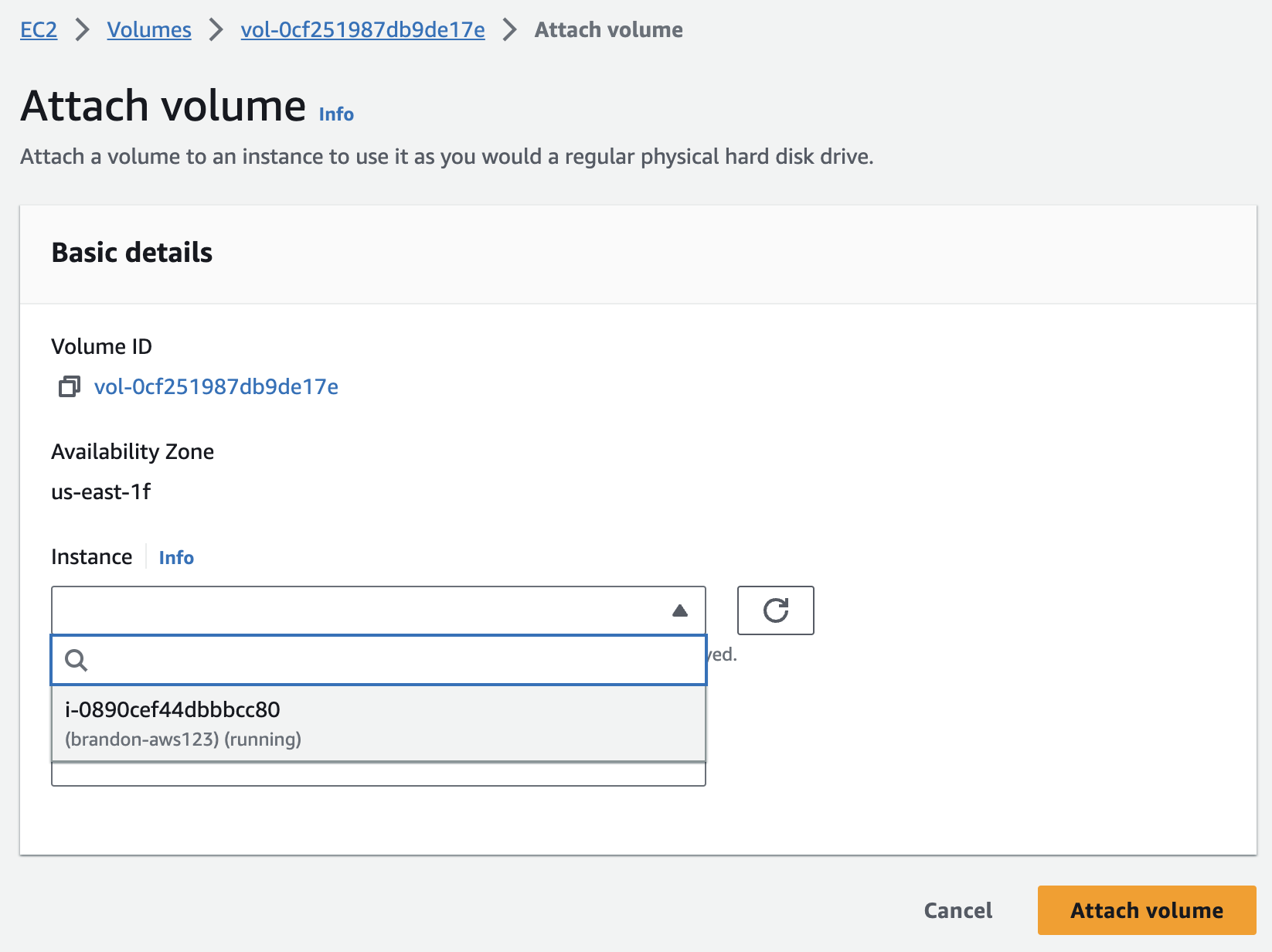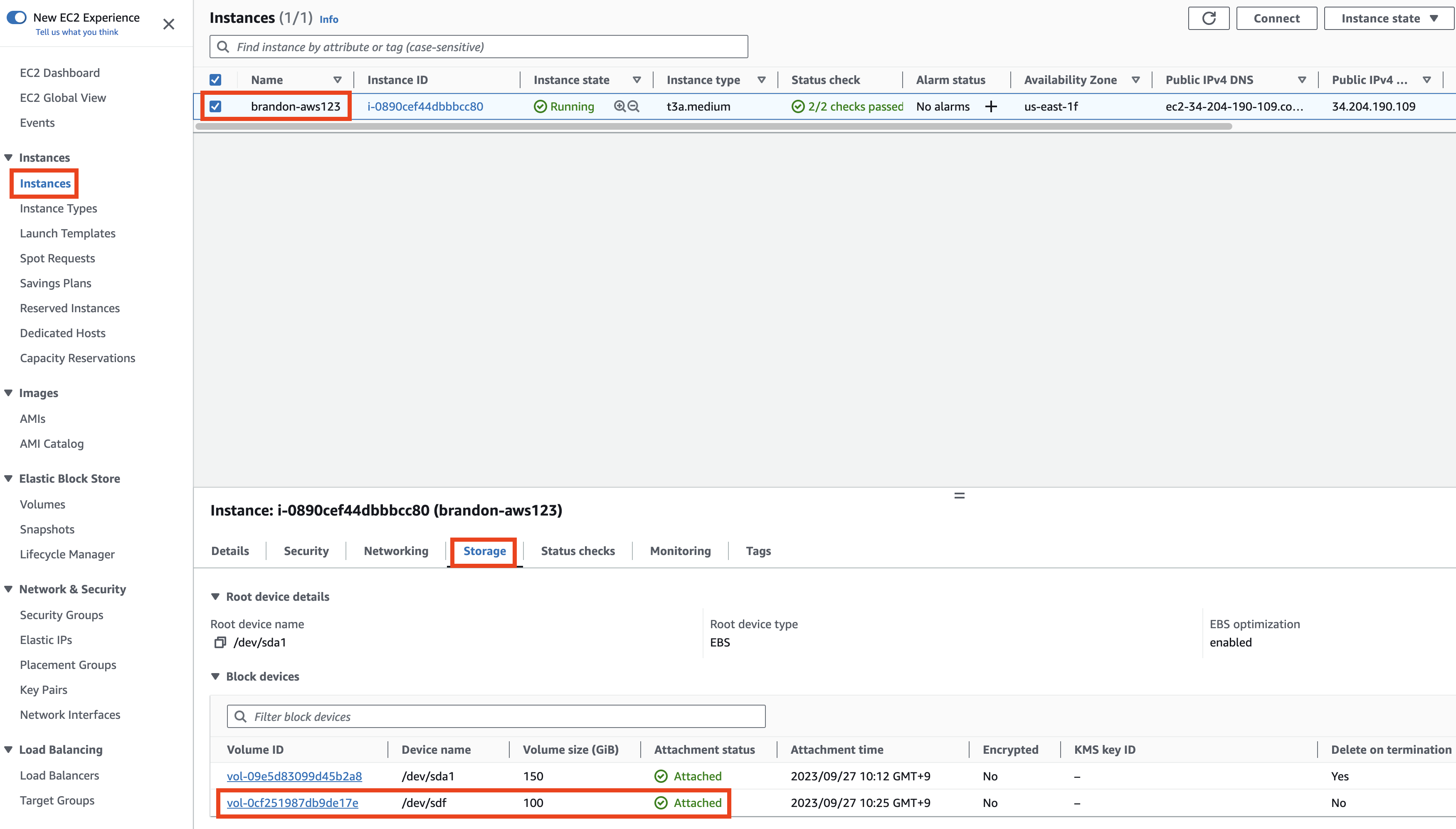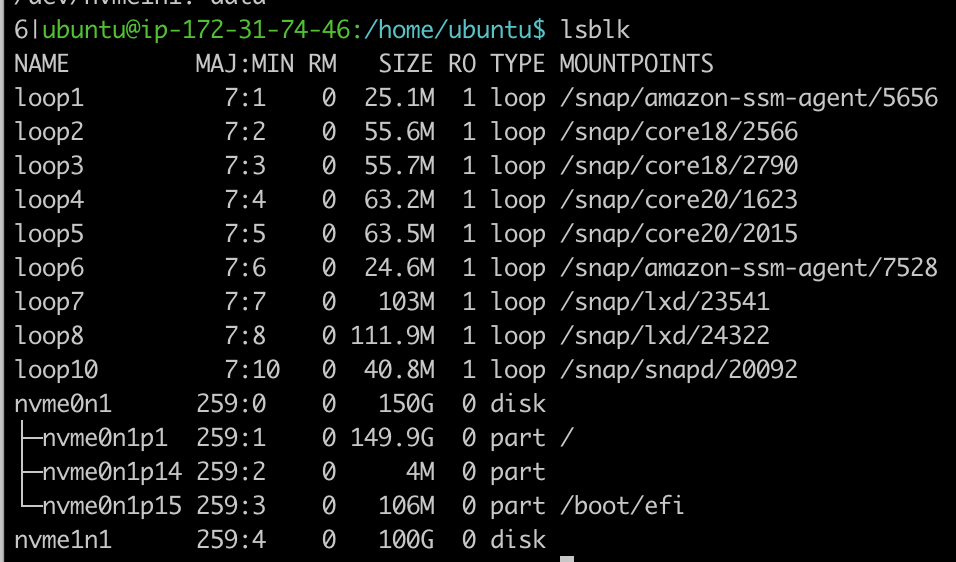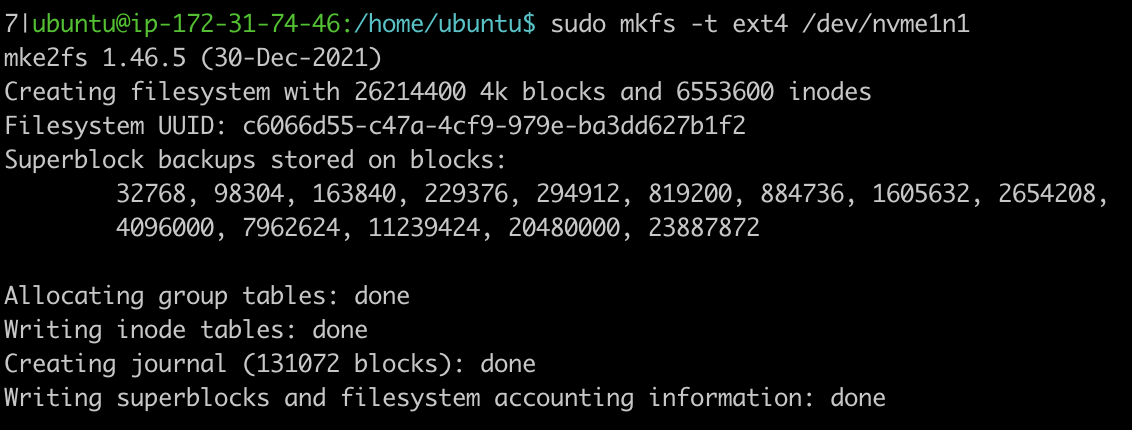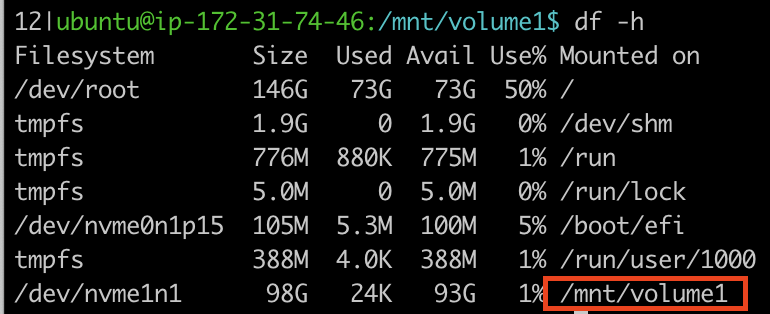저장 장치 추가하기
The created생성된 EC2 instance인스턴스에는 has운영 a체제를 root지원하기에 volume충분한 with저장 enough용량을 storage갖춘 capacity루트 to볼륨과 support분석을 the지원하는 operating데 system,필요한 as몇 well가지 as추가 a애플리케이션이 few있습니다. additional이제 applications다운로드하려는 required대용량 for데이터 supporting the analyses. We will now need additional storage to accommodate the large datasets we are about to download (e.g.세트(예: Raw reads, aligned sequences etc.).등)를 Hence수용하기 we위해 need추가 to스토리지가 attach필요합니다. additional따라서 storage.추가 스토리지를 연결해야 합니다.
In this section we will:
a. Create an Elastic Block Store (EBS) volume.
b. Attach the new volume to an EC2 instance.
c. Format and mount the new volume.
1. Format the new volume with a filesystem.
2. Mount the volume and copy some data into it.
CREATE AN EBS VOLUME
-
In the AWS Management Console search bar, type EC2 to navigate to the EC2 Service.
-
On the Left Navigation Bar click on Volumes under Elastic Block Store
-
Click on Create Volume (on the top right corner) to create a new volume
-
In the Create Volume page fill out the required size of the volume in GB, e.g. 10 GB or more depending on the data set size.
NOTE: For the purposes of this lab 10 GB will suffice.
Important: Make sure the Availability Zone is the same as the EC2 instance you are going to attach the volume to.
- Click on Add Tag to uniquely tag the resource. Provide “Name” for the Key and “[your initials]-EBS” for the value.
Attach an EBS Volume to a running Instance
-
Click on Actions and further click on Attach Volume
-
In the Attach Volume dialog, click on the Instance field and select the EC2 instance by looking for the Instance ID or Name Tag in the list. Click Attach to attach the volume.
If attached successfully - In the list of displayed volumes you should see your new volume having a status (under the State Column) indicating In Use.
Important: Note down the specific device name for the next step of mounting the volume. The drive name may differ from what’s shown.
NOTE: Depending on the Linux version and the machine type, the device names may differ. The EC2 Console will generally show /dev/sdX, where X is a lower-case letter, but you may see /dev/xvdX or /dev/nvmeYn1. The following table may help with translating. Another way to help track is to pick different sizes for your EBS volumes (such as 151, 152, 153 GB for different volumes). | Device name (Console) | Alternate 1 | Alternate 2 | | — | — | — | | /dev/sda | /dev/xvda | /dev/nvme0n1 | | /dev/sdb | /dev/xvdb | /dev/nvme1n1 | | /dev/sdc | /dev/xvdc | /dev/nvme2n1 | | /dev/sdd | /dev/xvdd | /dev/nvme3n1 | | /dev/sde | /dev/xvde | /dev/nvme4n1 | | /dev/sdf | /dev/xvdf | /dev/nvme5n1 |
MOUNT THE VOLUME
-
Log in to your EC2 Instance.
-
List the available disks using the following command:
lsblk
The output will list the disks attached to your instance.
예시
NOTE: Depending on the Linux version and the machine type, the device names may differ. The EC2 Console will generally show /dev/sdX, where X is a lower-case letter, but you may see /dev/xvdX or /dev/nvmeYn1. The following table may help with translating. Another way to help track is to pick different sizes for your EBS volumes (such as 151, 152, 153 GB for different volumes).
| Device name (Console) | Alternate 1 | Alternate 2 |
|---|---|---|
| /dev/sda | /dev/xvda | /dev/nvme0n1 |
| /dev/sdb | /dev/xvdb | /dev/nvme1n1 |
| /dev/sdc | /dev/xvdc | /dev/nvme2n1 |
| /dev/sdd | /dev/xvdd | /dev/nvme3n1 |
| /dev/sde | /dev/xvde | /dev/nvme4n1 |
| /dev/sdf | /dev/xvdf | /dev/nvme5n1 |
- Check for an unmounted filesystem of size 100GB. For example: “nvme1n1” as shown below:
NAME MAJ:MIN RM SIZE RO TYPE MOUNTPOINT
nvme0n1 259:0 0 150G 0 disk
└─nvme0n1p1 259:1 0 150G 0 part /
nvme1n1 259:2 0 100G 0 disk
- Check if the volume has any data using the following command:
sudo file -s /dev/nvme1n1
Where “nvme1n1” is the device you noted from the previous section after attaching the device to the EC2 Instance.
If the above command output shows "/dev/nvme1n1: data", it means your volume is empty.
예시
- Format the volume to the ext4 filesystem using the following command.
sudo mkfs -t ext4 /dev/nvme1n1
NOTE: This file-system formatting step is only for a new device, DO NOT run this step while mounting an existing volume as it will wipe out all data on the device.
예시
- Create a directory of your choice to mount our new ext4 volume. Let’s use the name “volume1”.
sudo mkdir /mnt/volume1
- Mount the volume to “volume1” directory using the following command.
sudo mount /dev/nvme1n1 /mnt/volume1
- cd into the volume1 directory and check the disk space for confirming the volume mount.
cd /mnt/volume1
df -h .
The above command would show the free space in the volume1 directory.
- At this point, the drive is owned by root and not user. We will want to change ownership of the drive, so that you can change the contents of the drive (Add/remove files, etc).
sudo chown -R ubuntu /mnt/volume1
예시
- For your own information, it is possible to later remove this device. Practice unmounting, then remounting it. To unmount the volume, you have to use the following command. Make sure to be outside the directory to unmount the volume.
sudo umount /dev/nvme1n1
But we’ll need this device for later, so remember to re-mount it.
sudo mount /dev/nvme1n1 /mnt/volume1
